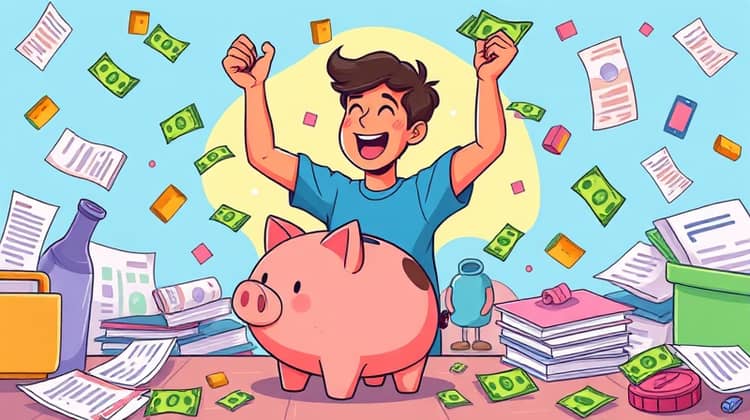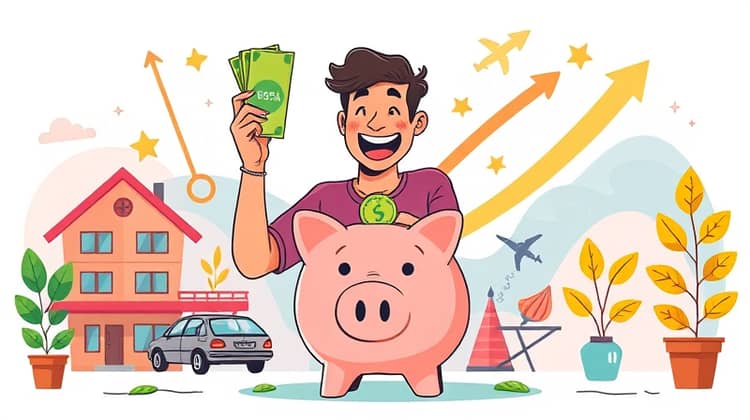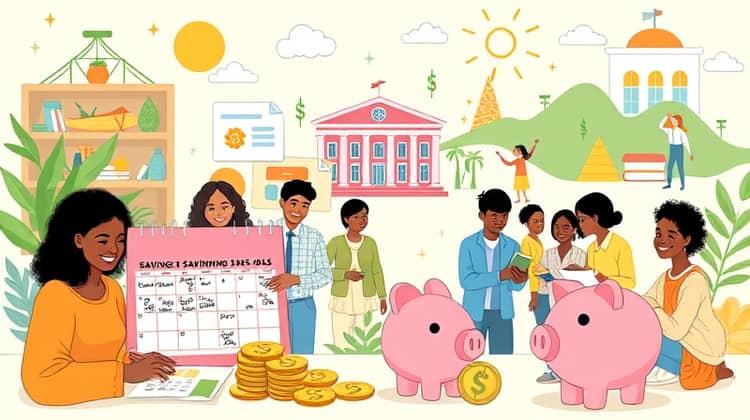Pay Yourself First: The Key to Financial Freedom

Understanding how to manage personal finances is crucial for achieving financial freedom. One methodology that stands above others is the 'Pay Yourself First' principle, which emphasizes the importance of prioritizing your savings before anything else. This approach shifts your mindset from living paycheck to paycheck towards one where saving becomes a consistent habit that builds wealth over time. In this article, we will explore traditional savings methods and discuss the Pay Yourself First strategy in detail, highlighting its effectiveness and the numerous benefits it offers.
The Traditional Approach to Saving

For many years, individuals have been taught to save what's left over after all expenses have been paid. This traditional approach often leads to minimal saving since most people tend to spend money on immediate wants rather than focusing on long-term financial health. Consequently, savings often become an afterthought, leading to insufficient funds for future goals or emergencies.
Additionally, this method relies on a concept of frugality that can encourage spending on non-essential items while neglecting to prioritize savings first. By the time the month ends, individuals may find that there is little to nothing left to save, which perpetuates a cycle of financial stress and instability.
- Saviors identify their savings after spending
- Savings are often minimal or non-existent
- It leads to financial stress
- Encourages spending on non-essentials
This traditional method ultimately does not foster a healthy financial lifestyle, and it often results in a constant struggle to make ends meet without any financial cushion. By implementing a different approach, individuals can change their financial trajectory significantly.
The Pay Yourself First Method

The Pay Yourself First method flips the traditional savings model on its head. Instead of waiting until all bills and expenses have been paid, this approach encourages individuals to allocate a specific portion of their income to savings as soon as they receive it. The idea is simple—treat savings like a mandatory expense, ensuring that a set percentage is saved before spending on anything else.
This method empowers savers to prioritize their financial future, reducing the likelihood that savings will be neglected in favor of immediate consumption. By automatically directing funds towards savings, they can build wealth over time and secure their financial independence.
Why It Works

The effectiveness of the Pay Yourself First method lies in its foundational principles of behavior and psychology. When individuals commit to saving first, they create a habit that reinforces the importance of prioritizing long-term financial health over immediate spending. Additionally, this approach reduces the temptation to spend money impulsively, as funds are already allocated elsewhere.
Moreover, by removing the need for a conscious decision to save after spending, this method helps individuals bypass the mental battle that often leads to procrastination or regret. The automatic nature of this process is key to its success.
- It establishes a regular saving habit
- Reduces temptation to overspend
- Encourages long-term thinking
- Facilitates wealth building
By ingraining this practice into their routine, individuals can ultimately achieve their financial goals much more effectively and with less stress involved.
How to Pay Yourself First

Paying yourself first can be easily implemented with a few practical steps. To begin, determine a reasonable percentage of your income that you can commit to saving. This might vary depending on your financial situation, but many experts recommend starting with at least 10% of your gross pay and adjusting upwards as feasible.
Next, set up automatic transfers from your checking account to a savings account or retirement fund. This ensures that your savings are deducted effortlessly right after you receive your pay, making it a 'set it and forget it' type of commitment that reinforces your savings habit.
- Calculate your percentage of income to save
- Set up automatic transfers to savings
- Monitor your progress regularly
- Adjust the percentage as your financial situation improves
By establishing these habits, individuals can ensure they remain committed to their savings and build a solid financial foundation over time.
The Benefits of Paying Yourself First

One of the primary benefits of the Pay Yourself First strategy is that it simplifies saving and fosters consistency. With savings becoming a non-negotiable line item in your budget, you are less likely to overlook it, leading to more controlled spending habits overall.
- Enhances financial security
- Promotes a savings mindset
- Encourages investment in future goals
- Can lead to debt reduction
Ultimately, by making saving a priority, individuals not only secure their financial future but also gain greater peace of mind, knowing they are preparing for unforeseen circumstances and long-term aspirations. With the right mindset, making savings a habit is not just a practice but a pathway to financial freedom.






